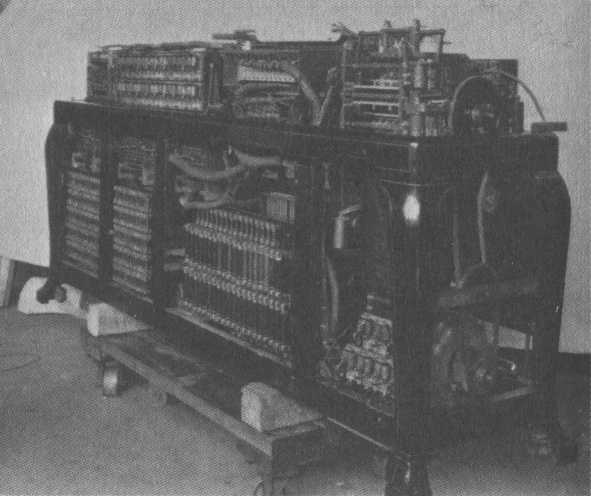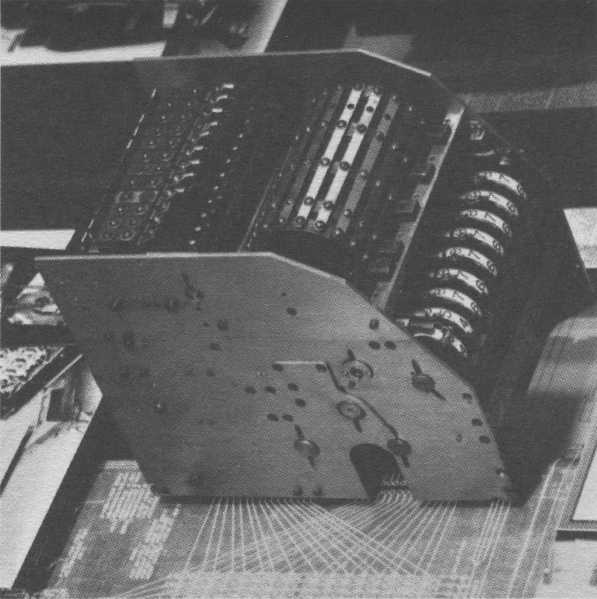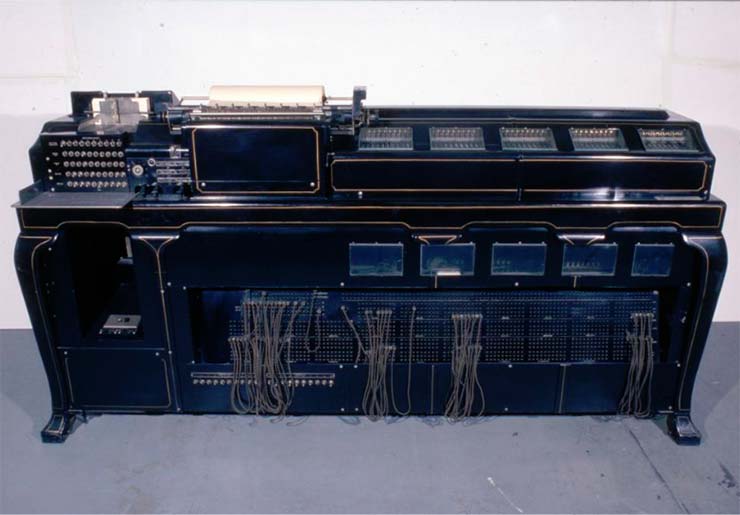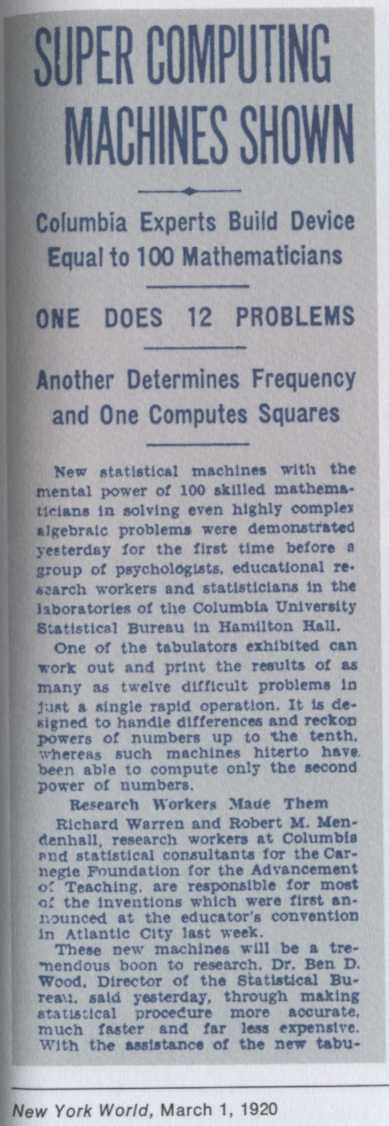The Columbia Difference Tabulator 1931


Allan Olley reports (November 2013) that this machine still exists. It's in the "basement" (not available for viewing) of the "nation's attic", the Smithsonian Instition; here's a modern photo:

Reference [103] shows a truncated
clipping from a New York World article supposedly dated "March
1, 1920" (which is obviously a mistake, since it refers to the Statistical
Bureau in Hamilton Hall, which did not exist until 1929) called "SUPER
COMPUTING MACHINES SHOWN":

"One of the tabulators exhibited can work out and print the results of as many as twelve difficult problems in just a single rapid operation. It is designed to handle differences and reckon powers of numbers up to the tenth, whereas such machines hiterto [sic] have been able to compute only the second power of numbers.
"Richard Warren and Robert M. Mendenhall, research workers at Columbia and statistical consultants for the Carnegie Foundation for the Advancement of Teaching, are responsible for most of the inventions which were first announced at the educator's convention in Atlantic City last week.
"These new machines will be a tremendous boon to research, Dr. Ben. D. Wood, Director of the Statistical Bureau, said yesterday, through making statistical procedure more accurate, much faster and less expensive. With the assistance of the new tabu-"
(The clipping breaks off here.) I can't imagine what they are talking about, unless it's the Columbia Difference Tabulator or a prototype of it.
- Bashe, Charles J.; Lyle R. Johnson; John H. Palmer; Emerson W. Pugh, IBM's Early Computers, MIT Press (1985).
- Brennan, Jean Ford, The IBM Watson Laboratory at Columbia University: A History, IBM, Armonk NY (1971)
- Eames, Charles and Ray, A Computer Perspective: Background to the Computer Age, Harvard University Press. First Edition 1973; Second Edition 1990 [103].
- Pugh, Emerson W., Building IBM: Shaping an Industry and its Technology, The MIT Press (1995).
Translations of this page courtesy of...
| Language | Link | Date | Translator | Organization |
|---|---|---|---|---|
| Belarusian | Беларуская | 2023/08/22 | Vladyslav Byshuk | Владислав Бишук | studycrumb.com |
| Finnish | Suomi | 2023/08/31 | Kerstin Schmidt | writemyessay4me.org |
| French | Français | 2023/08/25 | Kerstin Schmidt | prothesiswriter.com |
| German | Deutsch | 2023/08/25 | Kerstin Schmidt | writemypaper4me.org |
| Italian | Italiano | 2023/08/31 | Kerstin Schmidt | admission-writer.com |
| Norwegian | Norsk (bokmål) | 2022/08/10 | Rune | Bildeler på nett |
| Polish | Polski | 2023/08/25 | Kerstin Schmidt | justdomyhomework.com |
| Russian | Русский | 2023/08/22 | Vladyslav Byshuk | Владислав Бишук | skyclinic.ua |
| Spanish | Español | 2023/08/31 | Kerstin Schmidt | pro-academic-writers.com |
| Ukrainian | Українська | 2023/08/22 | Vladyslav Byshuk | Владислав Бишук | studybounty.com |